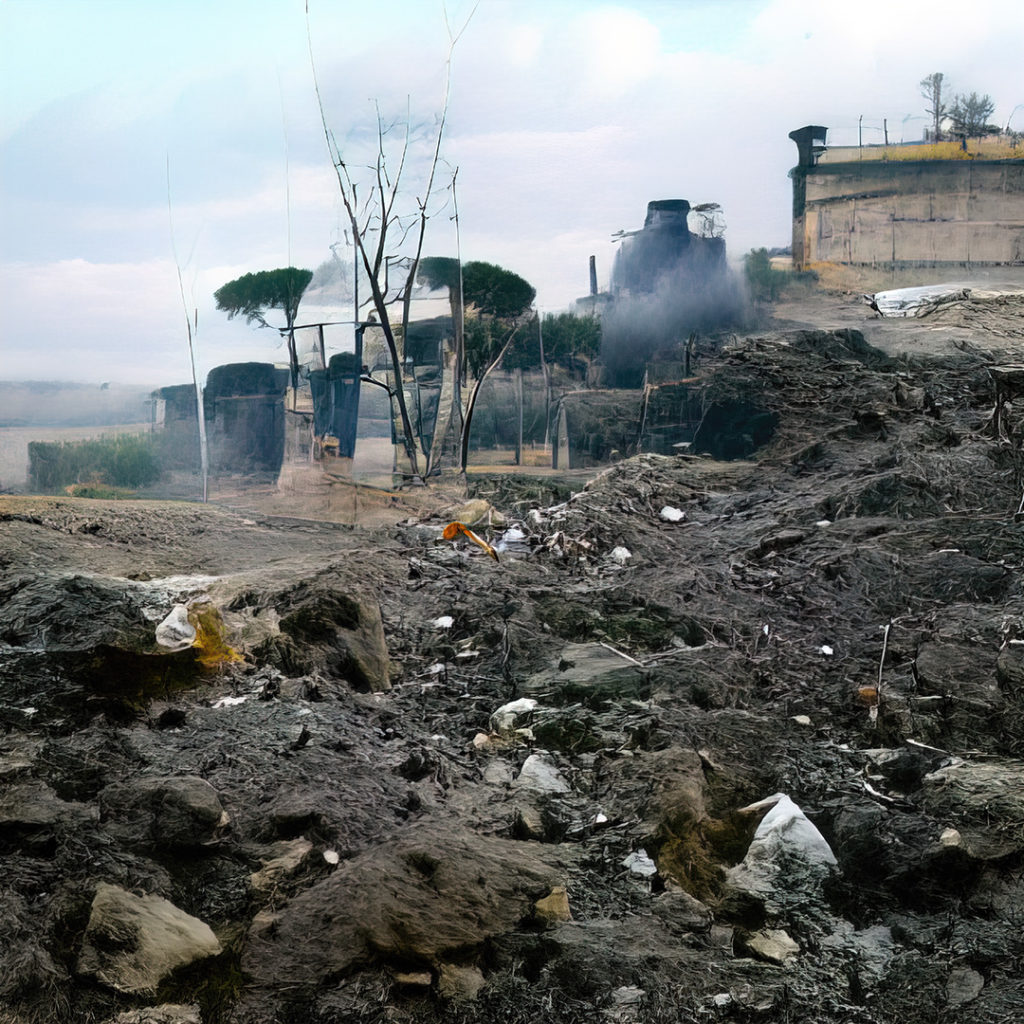Différence hypermnésique et répétition kitsch / Hypermnesic difference and kitschy repetition

Il est frappant de remarquer combien les images produites avec des réseaux de neurones se ressemblent et sont kitsch au sens où elles répètent le plus souvent des lieux communs esthétiques. Le transfert de style en est une forme, à la manière d’un plug-in sur Photoshop qui donne à n’importe quelle image le style d’une autre image (si possible un tableau connu de la modernité).
Or j’aimerais proposer que le style ou le kitsch sont profondément bouleversés par les réseaux de neurones. Il y aurait alors deux formes, l’une de la répétition et l’autre de la différence. Car à reprendre des styles connus, on reprend déjà des inductions et des synthèses et en ce sens on reste limité aux frontières d’une esthétique au second degré. Mais l’induction peut envahir et traverser, infecter plusieurs styles, passer d’une image à l’autre et créer un style hybride qui n’existe pas encore et qui pourtant nous rappelle non pas une image en particulier (comme c’est le cas l’induction répétitive), mais une Stimmung d’images, une atmosphère, quelque chose de plus fluide.
Il s’agit là de traiter l’hypermnésie contemporaine, dont les données massives sont la forme la plus aboutie, non pas en créant une image à la manière de Picasso ou de Van Gogh, mais en traversant des millions d’images de sorte qu’on ne reproduira pas un style pictural, mais un espace de mondiation (Descola), c’est-à-dire une atmosphère indéterminée de réalité étrange et familière à la fois. Nous ne la connaissons pas, même si nous la reconnaissons.
Dans la répétition du kitsch, tout est question de technique instrumentale. On demande quel code a été utilisé pour produire telle ou telle image ? Quel dataset ? À coup sûr, on pourra reproduire le même résultat, car il y a une linéarité entre les causes programmatiques et les effets esthétiques, entre l’espace latent et son actualisation ponctuelle. La fabrique est explicite.
Mais dans le cas de la différence hypermnésique, qui ne cherche pas à reproduire un style pictural, mais un espace de mondiation, ou du moins à s’en inspirer, la question n’est nullement instrumentale, elle concerne le langage humain-machine. Pour approcher ce langage, on peut prendre l’exemple de la boucle d’adaptation dans le moteur Google : nous avons tous appris à parler à la manière de Google pour obtenir des résultats intéressants tout comme le moteur de recherche a appris de notre langage. L’adaptation est réciproque et sans fin. Cette convergence ne mène à aucune identité entre les deux langages, car la convergence est sans fin allant jusqu’au parallélisme. Il s’agit d’apprendre à parler réseaux de neurones en même temps que ceux-ci ingurgitent notre mondiation jusqu’au point où on ne sait plus qui est l’origine de quoi. Loin de la fusion cyborg, l’hétérogène persiste et permet une communication désajustée qui produit précisément des formes esthétiques.
Entre la performance instrumentale du kitsch inductif et l’étrange familiarité du langage hybride de l’induction, une époque s’ouvre.
–

It is striking to notice how much the images produced with neural networks are similar and kitschy in the sense that they usually repeat aesthetic commonplaces. The transfer of style is a form of this, in the manner of a plug-in on Photoshop which gives to any image the style of another image (if possible a known painting of modernity).
But I would like to propose that style or kitsch are deeply changed by neural networks. There would then be two forms, one of repetition and the other of difference. Because to take back known styles, we already take back inductions and syntheses and in this sense we remain limited to the borders of an aesthetic to the second degree. But induction can invade and cross over, infect several styles, pass from one image to another and create a hybrid style that does not yet exist and yet reminds us not of a particular image (as is the case with repetitive induction), but of a Stimmung of images, an atmosphere, something more fluid.
It is a question of dealing with contemporary hypermnesia, of which massive data is the most accomplished form, not by creating an image in the manner of Picasso or Van Gogh, but by going through millions of images so that one will not reproduce a pictorial style, but a space of mundiation (Descola), that is to say an indeterminate atmosphere of strange and familiar reality at the same time. We do not know it, even if we recognize it.
In the repetition of the kitsch, all is question of instrumental technique. We ask what code was used to produce this or that image? Which dataset? For sure, one will be able to reproduce the same result, because there is a linearity between the programmatic causes and the aesthetic effects, between the latent space and its punctual actualization. The factory is explicit.
But in the case of the hypermnesic difference, which does not seek to reproduce a pictorial style, but a space of mundialization, or at least to be inspired by it, the question is not instrumental at all, it concerns the human-machine language. To approach this language, we can take the example of the adaptation loop in the Google engine: we have all learned to speak in Google’s way to obtain interesting results, just as the search engine has learned from our language. The adaptation is reciprocal and endless. This convergence does not lead to any identity between the two languages, because the convergence is endless and goes as far as parallelism. It is a question of learning to speak neural networks at the same time as they ingest our globalisation to the point where we no longer know who is the origin of what. Far from the cyborg fusion, the heterogeneity persists and allows a disadjusted communication which produces precisely aesthetic forms.
Between the instrumental performance of the inductive kitsch and the strange familiarity of the hybrid language of induction, an era opens up.
